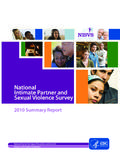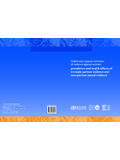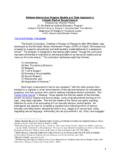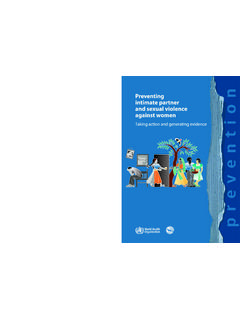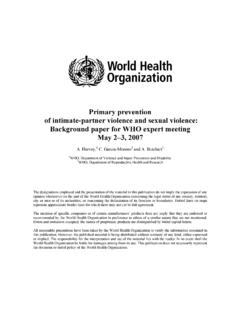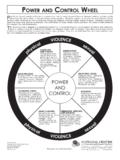Transcription of Guidelines for the prevention and management of …
1 Guidelines for the prevention and management of vicarious trauma among researchers of sexual and intimate partner violenceSuggested Citation: Guidelines for the prevention and management of vicarious trauma among researchers of sexual and intimate partner violence. (2015). Sexual Violence Research Initiative. Pretoria: South :This document has been developed by a group of passionate researchers who care greatly about this work, and recognise how important it is to acknowledge the toll this work can take on us. We hope that these Guidelines will help encourage and support others to respond to, and even prevent vicarious trauma in their research on sexual and intimate partner Sexual Violence Research Initiative (SVRI) would warmly like to thank the core writing group.
2 Deborah Billings (Advocates for Youth, USA), Rachel Cohen (consulting clinical psychologist, USA), Jan Coles (Monash University, Australia), Manuel Contreras-Urbina (George Washington University, USA), Elizabeth Dartnall (SVRI, South Africa), Abbie Fields (Universidad Centroamericana, Nicaragua), Abigail Hatcher (Wits Reproductive Health and HIV Institute, South Africa), Lizle Loots (SVRI, South Africa), Lusajo Kajula (Muhimbili University of Health and Allied Sciences, Tanzania), Sathya Manoharan (Monash University, Australia), Annemiek Richters (Leiden University, Netherlands), Yandisa Sikweyiya (Medical Research Council, South Africa), Henny Slegh (Promundo, Great Lakes Region), Kirsten Thomson (Wits Reproductive Health and HIV Institute, South Africa), Marnie Vujovic (Right to Care, South Africa).
3 We would also like to thank colleagues who gave insightful and helpful reviews on the Guidelines , and those who contributed valuable reading materials:Jill Astbury (Victoria University, Australia), Jonathan Brakarsh (consulting clinical psychologist, Zimbabwe), Nwabisa Jama-Shai (Medical Research Council, South Africa), Amelia Kleijn (GBV consultant, researcher and independent social worker, South Africa), Catherine Maternowska (UNICEF, Italy), Sarah Martin (GBV prevention and response advisor, Thailand), Jennifer McCleary-Sills (World Bank, USA); Rachel Jewkes (Medical Research Council, South Africa), Ruchira Tabassum Naved (ICDDR,B, Bangladesh).
4 IContentsIntroduction to the Guidelines 1 Who are the Guidelines for? 1 Development of the Guidelines 2 What do the Guidelines cover? 2 What is vicarious trauma ? 3 Impact of vicarious trauma 4 vicarious trauma and the Socio-Ecological Model 6 Risk and Protective Factors 7 Risk Factors 7 Protective Factors 9 Strategies for Responding to and prevention of vicarious
5 trauma among Researchers 12 Ethics and vicarious trauma 15 Epilogue 17 References 18 Key Terms and Concepts 22 Further Reading and Materials 23ii The term researcher (or research team ) is used throughout the document to refer to all members listed in this to the GuidelinesThese Guidelines outline recommendations for the prevention of, and response to, vicarious trauma in researchers working in the field of sexual and intimate partner violence but can also be of use and relevance to those researching other sensitive topics including other forms of gender based violence.
6 The Guidelines serve several important : Provide a framework for understanding vicarious trauma among researchers of sexual and intimate partner violence. Assist and encourage organisations in developing Guidelines for, and committing resources to prevent and respond to vicarious trauma . Highlight the importance of addressing vicarious trauma as an ethical and institutional imperative for teams working in the field. Provide ethics review boards with guidance needed to ensure that research proposals address the issue of vicarious trauma throughout the research process.
7 Who are the Guidelines for?These Guidelines are for everyone seeking a better understanding of sexual and intimate partner violence through research, including: All members of a research team , including, data collectors, capturers and data analysts Independent researchers Research managers Research supervisors and students Field coordinators Research assistants Institutions Donors Ethics review boards Data coders Interpreters, translators and transcribers1 Development of the GuidelinesA number of activities have informed the development of these Guidelines including.
8 A series of workshops on vicarious trauma and research on sexual and intimate partner violence, held at the Medical Research Council South Africa in 2010, workshops at SVRI Forums in 2011 and 2013, a moderated SVRI online discussion forum held in 2009, an online survey conducted in 2011, a number of resultant publications and a set of Guidelines for researchers on the topic. More information on the online discussion and survey can be found at: What do the Guidelines cover?The Guidelines make recommendations for preventing and responding to trauma that impacts researchers and staff conducting research on sexual and intimate partner violence.
9 They describe vicarious trauma in the context of undertaking research on sexual and intimate partner violence; discuss its impact; and consider organisational, project and individual factors that mitigate potential adverse consequences of doing this type of research. They also provide recommendations for ethics boards and researchers for ensuring that researcher well-being is considered and interventions to prevent and address vicarious trauma are incorporated into research Even those who study rape can become emotionally affected by bearing witness to the devastating impact of this crime Campbell and Wasco 2005 Repeated exposure to traumatic interview material is a particular issue for those doing qualitative research.
10 Such researchers have to read and reread interviews many times as they seek to analyse their data and is more emotionally onerous than analysing quantitative data where individual accounts of trauma are not apparent ( data is summed and grouped).What is vicarious trauma ? trauma does not have to occur by abuse (Brown, 2011)Researchers and others involved in the area of sexual and intimate partner violence are often required to listen to, or are exposed to, deeply personal accounts of participants experiences of violence.





